This video accompanies a blog post of the same title. The content is mostly the same; the blog post contains a few extra elements (especially in the footnotes!). Enjoy whichever one you choose.
Also available on YouTube and on Facebook.
This post is also available as an article. So if you'd rather read a conventional blog post of this content, you can!
This video accompanies a blog post of the same title. The content is mostly the same; the blog post contains a few extra elements (especially in the footnotes!). Enjoy whichever one you choose.
Also available on YouTube and on Facebook.
This post is also available as a video. If you'd prefer to watch/listen to me talk about this topic, give it a look.
This blog post is also available as a video. Would you prefer to watch/listen to me tell you about the video game that had the biggest impact on my life?
Of all of the videogames I’ve ever played, perhaps the one that’s had the biggest impact on my life1 was: Werewolves and (the) Wanderer.2
This simple text-based adventure was originally written by Tim Hartnell for use in his 1983 book Creating Adventure Games on your Computer. At the time, it was common for computing books and magazines to come with printed copies of program source code which you’d need to re-type on your own computer, printing being significantly many orders of magnitude cheaper than computer media.3
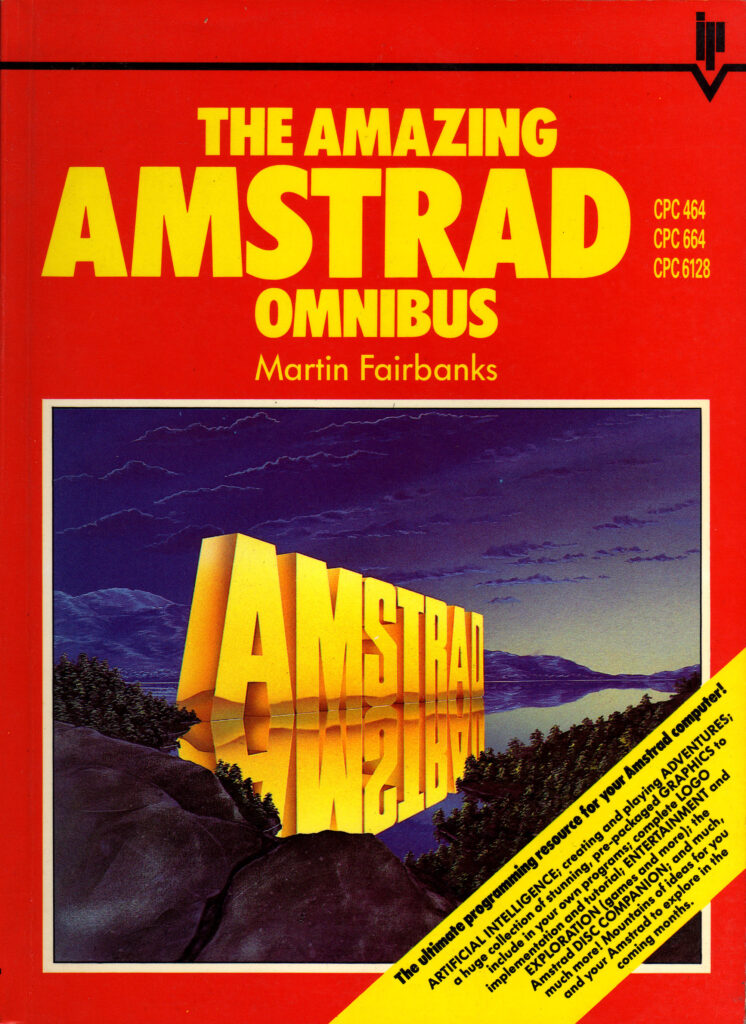
I’d been working my way through the operating manual for our microcomputer, trying to understand it all.5
![Scan of a ring-bound page from a technical manual. The page describes the use of the "INPUT" command, saying "This command is used to let the computer know that it is expecting something to be typed in, for example, the answer to a question". The page goes on to provide a code example of a program which requests the user's age and then says "you look younger than [age] years old.", substituting in their age. The page then explains how it was the use of a variable that allowed this transaction to occur.](https://bcdn.danq.me/_q23u/2023/07/cpc664-manual-input-command.png)
[ENTER] at the end of each line.
In particular, I found myself comparing Werewolves to my first attempt at a text-based adventure. Using what little I’d grokked of programming so far, I’d put together
a series of passages (blocks of PRINT statements6)
with choices (INPUT statements) that sent the player elsewhere in the story (using, of course, the long-considered-harmful GOTO statement), Choose-Your-Own-Adventure style.
Werewolves was… better.
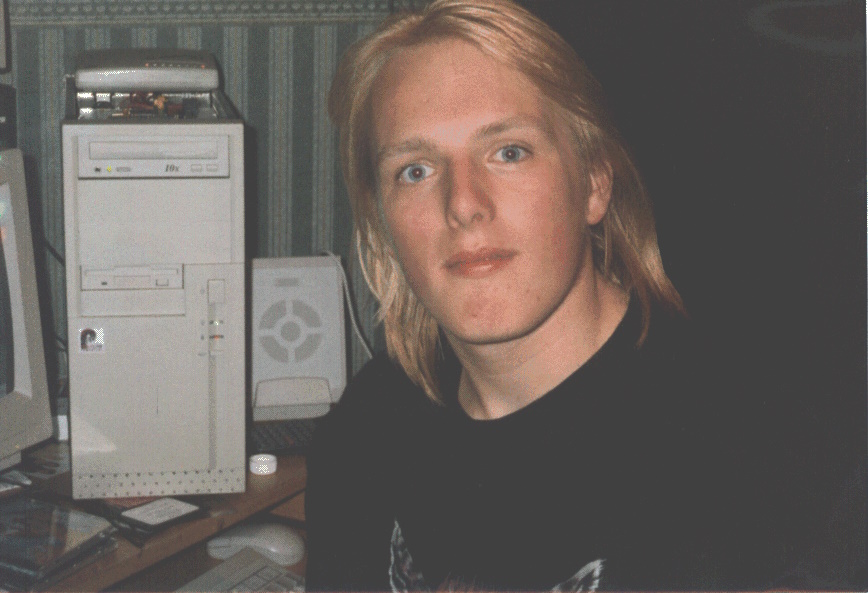
Werewolves and Wanderer was my first lesson in how to structure a program.
Let’s take a look at a couple of segments of code that help illustrate what I mean (here’s the full code, if you’re interested):
10 REM WEREWOLVES AND WANDERER 20 GOSUB 2600:REM INTIALISE 30 GOSUB 160 40 IF RO<>11 THEN 30 50 PEN 1:SOUND 5,100:PRINT:PRINT "YOU'VE DONE IT!!!":GOSUB 3520:SOUND 5,80:PRINT "THAT WAS THE EXIT FROM THE CASTLE!":SOUND 5,200 60 GOSUB 3520 70 PRINT:PRINT "YOU HAVE SUCCEEDED, ";N$;"!":SOUND 5,100 80 PRINT:PRINT "YOU MANAGED TO GET OUT OF THE CASTLE" 90 GOSUB 3520 100 PRINT:PRINT "WELL DONE!" 110 GOSUB 3520:SOUND 5,80 120 PRINT:PRINT "YOUR SCORE IS"; 130 PRINT 3*TALLY+5*STRENGTH+2*WEALTH+FOOD+30*MK:FOR J=1 TO 10:SOUND 5,RND*100+10:NEXT J 140 PRINT:PRINT:PRINT:END ... 2600 REM INTIALISE 2610 MODE 1:BORDER 1:INK 0,1:INK 1,24:INK 2,26:INK 3,18:PAPER 0:PEN 2 2620 RANDOMIZE TIME 2630 WEALTH=75:FOOD=0 2640 STRENGTH=100 2650 TALLY=0 2660 MK=0:REM NO. OF MONSTERS KILLED ... 3510 REM DELAY LOOP 3520 FOR T=1 TO 900:NEXT T 3530 RETURN
...) have been added for readability/your convenience.
What’s interesting about the code above? Well…
GOSUB statements):
2610), the RNG (2620), and player
characteristics (2630 – 2660). This also makes it easy to call it again (e.g. if the player is given the option to “start over”). This subroutine
goes on to set up the adventure map (more on that later).
160: this is the “main game” logic. After it runs, each time, line 40 checks IF RO<>11 THEN 30. This tests
whether the player’s location (RO) is room 11: if so, they’ve exited the castle and won the adventure. Otherwise, flow returns to line 30 and the “main
game” subroutine happens again. This broken-out loop improving the readability and maintainability of the code.8
3520). It just counts to 900! On a known (slow) processor of fixed speed, this is a simpler way to put a delay in than
relying on a real-time clock.
The game setup gets more interesting still when it comes to setting up the adventure map. Here’s how it looks:
2680 REM SET UP CASTLE 2690 DIM A(19,7):CHECKSUM=0 2700 FOR B=1 TO 19 2710 FOR C=1 TO 7 2720 READ A(B,C):CHECKSUM=CHECKSUM+A(B,C) 2730 NEXT C:NEXT B 2740 IF CHECKSUM<>355 THEN PRINT "ERROR IN ROOM DATA":END ... 2840 REM ALLOT TREASURE 2850 FOR J=1 TO 7 2860 M=INT(RND*19)+1 2870 IF M=6 OR M=11 OR A(M,7)<>0 THEN 2860 2880 A(M,7)=INT(RND*100)+100 2890 NEXT J 2910 REM ALLOT MONSTERS 2920 FOR J=1 TO 6 2930 M=INT(RND*18)+1 2940 IF M=6 OR M=11 OR A(M,7)<>0 THEN 2930 2950 A(M,7)=-J 2960 NEXT J 2970 A(4,7)=100+INT(RND*100) 2980 A(16,7)=100+INT(RND*100) ... 3310 DATA 0, 2, 0, 0, 0, 0, 0 3320 DATA 1, 3, 3, 0, 0, 0, 0 3330 DATA 2, 0, 5, 2, 0, 0, 0 3340 DATA 0, 5, 0, 0, 0, 0, 0 3350 DATA 4, 0, 0, 3, 15, 13, 0 3360 DATA 0, 0, 1, 0, 0, 0, 0 3370 DATA 0, 8, 0, 0, 0, 0, 0 3380 DATA 7, 10, 0, 0, 0, 0, 0 3390 DATA 0, 19, 0, 8, 0, 8, 0 3400 DATA 8, 0, 11, 0, 0, 0, 0 3410 DATA 0, 0, 10, 0, 0, 0, 0 3420 DATA 0, 0, 0, 13, 0, 0, 0 3430 DATA 0, 0, 12, 0, 5, 0, 0 3440 DATA 0, 15, 17, 0, 0, 0, 0 3450 DATA 14, 0, 0, 0, 0, 5, 0 3460 DATA 17, 0, 19, 0, 0, 0, 0 3470 DATA 18, 16, 0, 14, 0, 0, 0 3480 DATA 0, 17, 0, 0, 0, 0, 0 3490 DATA 9, 0, 16, 0, 0, 0, 0
DATA statements form a “table”.
What’s this code doing?
2690 defines an array (DIM) with two dimensions9
(19 by 7). This will store room data, an approach that allows code to be shared between all rooms: much cleaner than my first attempt at an adventure with each room
having its own INPUT handler.
2700 through 2730 populates the room data from the DATA blocks. Nowadays you’d probably put that data in a
separate file (probably JSON!). Each “row” represents a room, 1 to 19. Each “column” represents the room you end up
at if you travel in a given direction: North, South, East, West, Up, or Down. The seventh column – always zero – represents whether a monster (negative number) or treasure
(positive number) is found in that room. This column perhaps needn’t have been included: I imagine it’s a holdover from some previous version in which the locations of some or all of
the treasures or monsters were hard-coded.
2850 selects seven rooms and adds a random amount of treasure to each. The loop beginning on line 2920 places each of six
monsters (numbered -1 through -6) in randomly-selected rooms. In both cases, the start and finish rooms, and any room with a treasure or monster, is
ineligible. When my 8-year-old self finally deciphered what was going on I was awestruck at this simple approach to making the game dynamic.
2970 – 2980), replacing any treasure or monster already there: the Private Meeting Room (always
worth a diversion!) and the Treasury, respectively.
2740 is cute, and a younger me appreciated deciphering it. I’m not convinced it’s necessary (it sums all of the values in
the DATA statements and expects 355 to limit tampering) though, or even useful: it certainly makes it harder to modify the rooms, which may undermine
the code’s value as a teaching aid!

Something you might notice is missing is the room descriptions. Arrays in this language are strictly typed: this array can only contain integers and not strings. But there are other reasons: line length limitations would have required trimming some of the longer descriptions. Also, many rooms have dynamic content, usually based on random numbers, which would be challenging to implement in this way.
As a child, I did once try to refactor the code so that an eighth column of data specified the line number to which control should pass to display the room description. That’s
a bit of a no-no from a “mixing data and logic” perspective, but a cool example of metaprogramming before I even knew it! This didn’t work, though: it turns out you can’t pass a
variable to a Locomotive BASIC GOTO or GOSUB. Boo!10
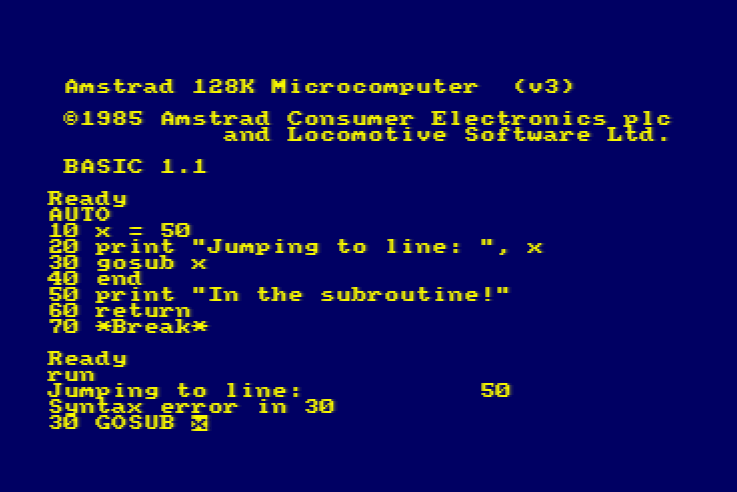
Werewolves and Wanderer has many faults11. But I’m clearly not the only developer whose early skills were honed and improved by this game, or who hold a special place in their heart for it. Just while writing this post, I discovered:
A decade or so later, I’d be taking my first steps as a professional software engineer. A couple more decades later, I’m still doing it.
And perhaps that adventure -the one that’s occupied my entire adult life – was facilitated by this text-based one from the 1980s.
1 The game that had the biggest impact on my life, it might surprise you to hear, is not among the “top ten videogames that stole my life” that I wrote about almost exactly 16 years ago nor the follow-up list I published in its incomplete form three years later. Turns out that time and impact are not interchangable. Who knew?
2 The game is variously known as Werewolves and Wanderer, Werewolves and
Wanderers, or Werewolves and the
Wanderer. Or, on any system I’ve been on, WERE.BAS, WEREWOLF.BAS, or WEREWOLV.BAS, thanks to the CPC’s eight-point-three filename limit.
3 Additionally, it was thought that having to undertake the (painstakingly tiresome) process of manually re-entering the source code for a program might help teach you a little about the code and how it worked, although this depended very much on how readable the code and its comments were. Tragically, the more comprehensible some code is, the more long-winded the re-entry process.
4 The CPC’s got a fascinating history in its own right, but you can read that any time.
5 One of my favourite features of home microcomputers was that seconds after you turned them on, you could start programming. Your prompt was an interface to a programming language. That magic had begun to fade by the time DOS came to dominate (sure, you can program using batch files, but they’re neither as elegant nor sophisticated as any BASIC dialect) and was completely lost by the era of booting directly into graphical operating systems. One of my favourite features about the Web is that it gives you some of that magic back again: thanks to the debugger in a modern browser, you can “tinker” with other people’s code once more, right from the same tool you load up every time. (Unfortunately, mobile devices – which have fast become the dominant way for people to use the Internet – have reversed this trend again. Try to View Source on your mobile – if you don’t already know how, it’s not an easy job!)
6 In particular, one frustration I remember from my first text-based adventure was that I’d been unable to work around Locomotive BASIC’s lack of string escape sequences – not that I yet knew what such a thing would be called – in order to put quote marks inside a quoted string!
7 “Screen editors” is what we initially called what you’d nowadays call a “text editor”: an application that lets you see a page of text at the same time, move your cursor about the place, and insert text wherever you feel like. It may also provide features like copy/paste and optional overtyping. Screen editors require more resources (and aren’t suitable for use on a teleprinter) compared to line editors, which preceeded them. Line editors only let you view and edit a single line at a time, which is how most of my first 6 years of programming was done.
8 In a modern programming language, you might use while true or similar for a
main game loop, but this requires pushing the “outside” position to the stack… and early BASIC dialects often had strict (and small, by modern standards) limits on stack height that
would have made this a risk compared to simply calling a subroutine from one line and then jumping back to that line on the next.
9 A neat feature of Locomotive BASIC over many contemporary and older BASIC dialects was its support for multidimensional arrays. A common feature in modern programming languages, this language feature used to be pretty rare, and programmers had to do bits of division and modulus arithmetic to work around the limitation… which, I can promise you, becomes painful the first time you have to deal with an array of three or more dimensions!
10 In reality, this was rather unnecessary, because the ON x GOSUB command
can – and does, in this program – accept multiple jump points and selects the one
referenced by the variable x.
11 Aside from those mentioned already, other clear faults include: impenetrable controls unless you’ve been given instuctions (although that was the way at the time); the shopkeeper will penalise you for trying to spend money you don’t have, except on food, presumably as a result of programmer laziness; you can lose your flaming torch, but you can’t buy spares in advance (you can pay for more, and you lose the money, but you don’t get a spare); some of the line spacing is sometimes a little wonky; combat’s a bit of a drag; lack of feedback to acknowledge the command you enterted and that it was successful; WHAT’S WITH ALL THE CAPITALS; some rooms don’t adequately describe their exits; the map is a bit linear; etc.
This is a repost promoting content originally published elsewhere. See more things Dan's reposted.
This was a delightful vlog. It really adds personality to what might otherwise have been a story only about technology and history.
I subscribed to Codex’s vlog like… four years ago? He went dark soon afterwards, but thanks to the magic of RSS, I got notified as soon as he came back from his hiatus.
I’m off work sick today: it’s just a cold, but it’s had a damn good go at wrecking my lungs and I feel pretty lousy. You know how when you’ve got too much of a brain-fog to trust yourself with production systems but you still want to write code (or is that just me?), so this morning I threw together a really, really stupid project which you can play online here.

It’s inspired by a toot by Mason”Tailsteak” Williams (whom I’ve mentioned before once or twice). At first I thought I’d try to calculate the odds of winning at his proposed game, or how many times one might expect to play before winning, but I haven’t the brainpower for that in my snot-addled brain. So instead I threw together a terrible, terrible digital implementation.
Go play it if, like me, you’ve got nothing smarter that your brain can be doing today.
This is a repost promoting content originally published elsewhere. See more things Dan's reposted.
You’ve got 37 unpaid parking tickets. You just got pulled over for speeding. In your defense, you were texting your sister about how drunk you are. Plus there’s all that blood on your windshield. Obviously you know it’s deer blood, but the police officers walking toward your vehicle don’t. Still, in the time it takes them to figure that out, maybe you’ll sober up. Or escape on foot! Either way, it’ll probably be fine.
User Tags: Poor Choices / Story Rich / Multiple Endings / Parkour
Collect dead seagulls and build a zoo to house them all. Beautify the zoo with artistic flair and deodorizing sprays. Design creative group promotions to stir up interest! Is that a customer? You’d better hope it’s not the owner of the live seagull zoo down the street, because he’s probably got some questions.
User Tags: Hard Work / Supply / Demand / Diseases & Parasites
…
Claire Hummel produced fake video game art for the Steam Summer Sale, which was already excellent, but when @g-a-y-g-o-y-l-e reblogged, asking for more context, Claire delivered and then some. Every single one of these “game descriptions” is a special kind of comedy gold… and yet somehow believable from the store that sells us Dream Daddy, IKEA VR Pancake Kitchen, Organ Trail, Oh… Sir!! The Insult Simulator, and Goat Simulator (all of which I own copies of). Go read the full list.
Don’t have time to read? Just start playing:
Am I too late to get onto the “making Wordle clones” bandwagon? Probably; there are quite a few now, including:
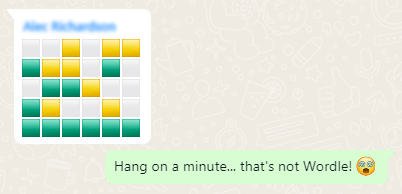
But you know what hasn’t been seen before today? A Wordle clone where you have to guess a creature from the Dungeons & Dragons (5e) Monster Manual by putting numeric values into a character sheet (STR, DEX, CON, INT, WIS, CHA):

What are you waiting for: go give DNDle a try (I pronounce it “dindle”, but you can pronounce it however you like). A new monster appears at 10:00 UTC each day.
And because it’s me, of course it’s open source and works offline.
import statements and bundles a single JS file for the browser.
A love a good Jackbox Game. There’s nothing quite like sitting around the living room playing Drawful, Champ’d Up, Job Job, Trivia Murder Party, or Patently Stupid. But nowadays getting together in the same place isn’t as easy as it used to be, and as often as not I find my Jackbox gaming with friends or coworkers takes place over Zoom, Around, Google Meet or Discord.
There’s lots of guides to doing this – even an official one! – but they all miss a few pro tips that I think can turn a good party into a great party. Get all of this set up before your guests are due to arrive to make yourself look like a super-prepared digital party master.

Using one computer for your video call and a second one to host the game (in addition to the device you’re using to play the games, which could be your phone) is really helpful for several reasons:
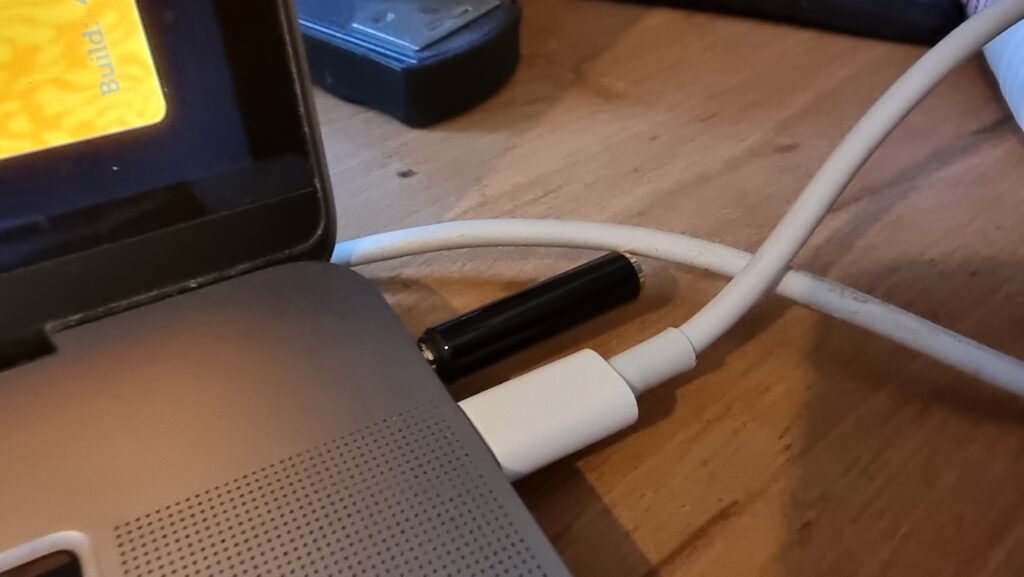
Connect some headphones to the computer that’s running the game (or set up a virtual audio output device if you’re feeling more technical). This means you can still have the game play sounds and transmit them over Zoom, but you’ll only hear the sounds that come through the screen share, not the sounds that come through the second computer too.
That’s helpful, because (a) it means you don’t get feedback or have to put up with an echo at your end, and (b) it means you’ll be hearing the game exactly the same as your guests hear it, allowing you to easily tweak the volume to a level that allows for conversation over it.
Jackbox games were designed first and foremost for sofa gaming, and playing with friends over the Internet benefits from a couple of changes to the default settings.
Sometimes the settings can be found in the main menu of a party pack, and sometimes they’re buried in the game itself, so do your research and know your way around before your party starts.
Turn the volume down, especially the volume of the music, so you can have a conversation over the game. I’d also recommend disabling Full-screen Mode: this reduces the resolution of the game, meaning there’s less data for your video-conferencing software to stream, and makes it easier to set up screen sharing without switching back and forth between your applications (see below).
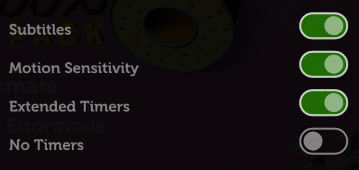
Turning on the Motion Sensitivity or Reduce Background Animations option if your game has it means there’ll be less movement in the background of the game. This can really help with the
video compression used in videoconferencing software, meaning players on lower-speed connections are less-likely to experience lag or “blockiness” in busy scenes.
It’s worth considering turning Subtitles on so that guests can work out what word they missed (which for the trivia games can be a big deal). Depending on your group, Extended Timers is worth considering too: the lag introduced by videoconferencing can frustrate players who submit answers at the last second only to discover that – after transmission delays – they missed the window! Extended Timers don’t solve that, but they do mean that such players are less-likely to end up waiting to the last second in the first place.
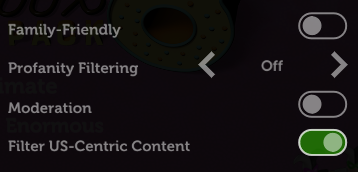
Finally: unless the vast majority or all of your guests are in the USA, you might like to flip the Filter US-Centric Content
switch so that you don’t get a bunch of people scratching their heads over a cultural reference that they just don’t get.
By the way, you can use your cursor keys and enter to operate Jackbox games menus, which is usually easier than fiddling with a mouse.
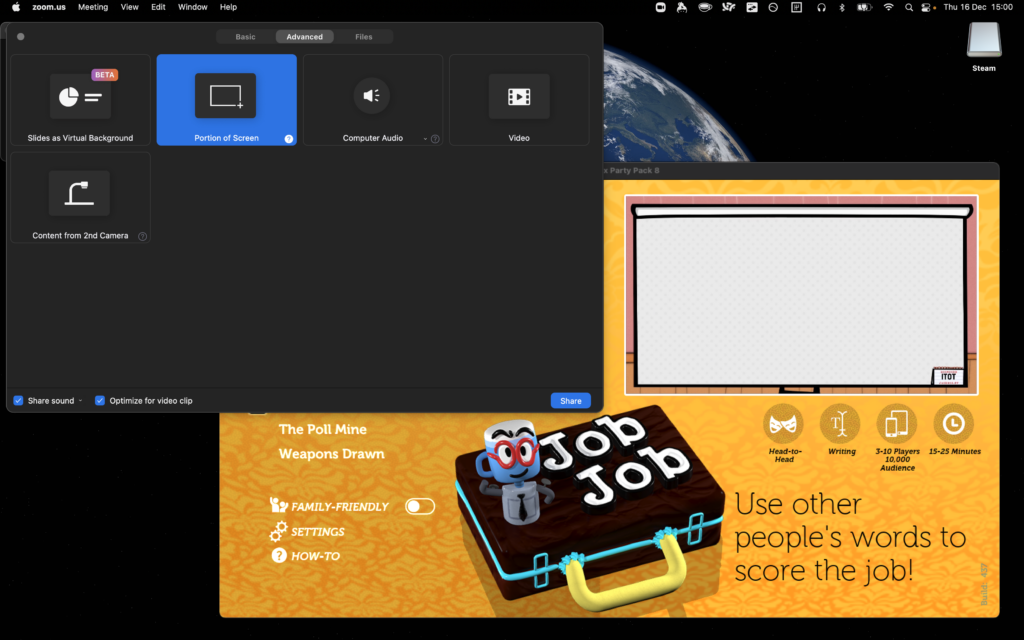
Whatever videoconferencing platform you’re using, the settings for screen sharing are usually broadly similar. I suggest:
Don’t forget to shut down any software that might “pop up” notifications: chat applications, your email client, etc.: the last thing you want is somebody to send you a naughty picture over WhatsApp and the desktop client to show it to everybody else in your party!
Looking for something with an “escape room” vibe for our date night this week, Ruth and I tried Tick Tock: A Tale for Two, a multiplayer simultaneous cooperative play game for two people, produced by Other Tales Interactive. It was amazing and I’d highly recommend it.

The game’s available on a variety of platforms: Windows, Mac, Android, iOS, and Nintendo Switch. We opted for the Android version because, thanks to Google Play Family Library, this meant we only had to buy one copy (you need it installed on both devices you’re playing it on, although both devices don’t have to be of the same type: you could use an iPhone and a Nintendo Switch for example).
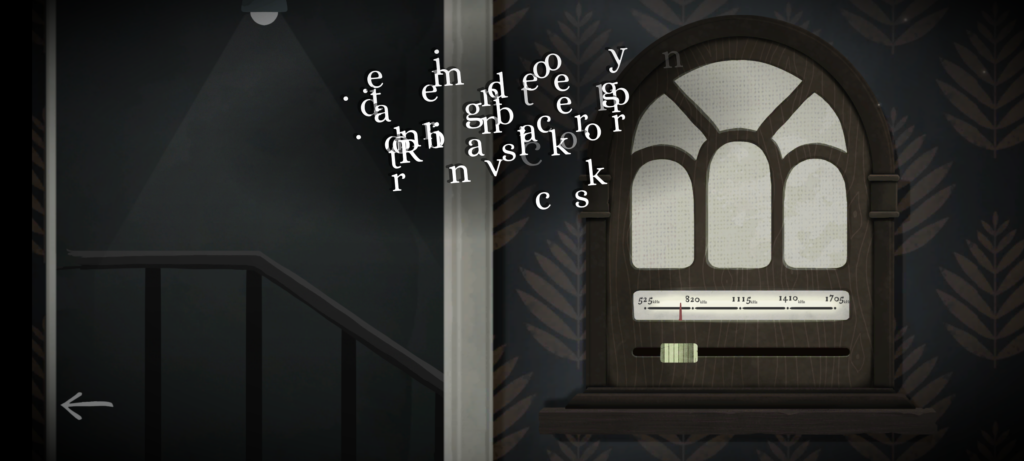
The really clever bit from a technical perspective is that the two devices don’t communicate with one another. You could put your devices in flight mode and this game would still work just fine! Instead, the gameplay functions by, at any given time, giving you either (a) a puzzle for which the other person’s device will provide the solution, or (b) a puzzle that you both share, but for which each device only gives you half of the clues you need. By working as a team and communicating effectively (think Keep Talking and Nobody Explodes but without the time pressure), you and your partner will solve the puzzles and progress the plot.
(We’re purists for this kind of puzzle game so we didn’t look at one another’s screens, but I can see how it’d be tempting to “cheat” in this way, especially given that even the guys in the trailer do so!)
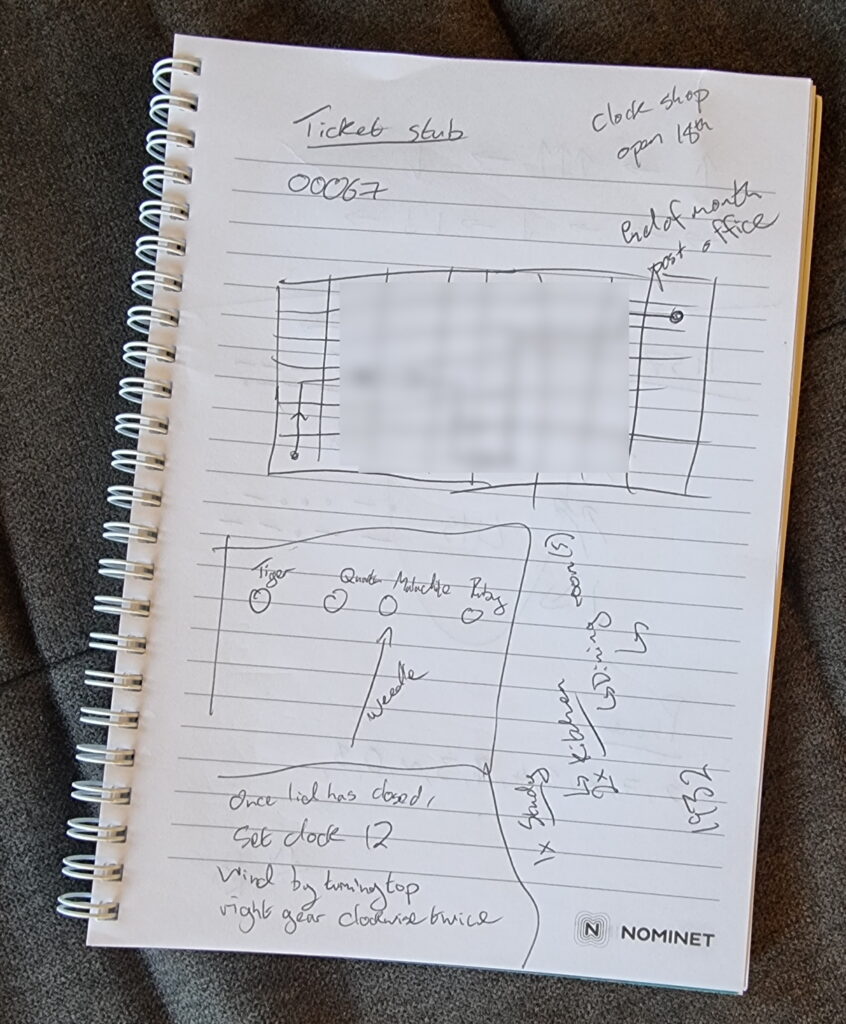
The puzzles start easy enough, to the extent that we were worried that the entire experience might not be challenging for us. But the second of the three acts proved us wrong and we had to step up our communication and coordination, and the final act had one puzzle that had us scratching our heads for some time! Quite an enjoyable difficulty curve, but still balanced to make sure that we got to a solution, together, in the end. That’s a hard thing to achieve in a game, and deserves praise.

The plot is a little abstract at times and it’s hard to work out exactly what role we, the protagonists, play until right at the end. That’s a bit of a shame, but not in itself a reason to reject this wonderful gem of a game. We spent 72 minutes playing it, although that includes a break in the middle to eat a delivery curry.
If you’re looking for something a bit different for a quiet night in with somebody special, it’s well worth a look.
This is a repost promoting content originally published elsewhere. See more things Dan's reposted.
I have this exact same ride-on mower, but mine doesn’t do this. I feel cheated.
This is a repost promoting content originally published elsewhere. See more things Dan's reposted.
I don’t normally watch videos of other people playing video games. I’m even less inclined to watch “walkthroughs”.
This, though, isn’t a walkthrough. It’s basically the opposite of a walkthrough: this is somebody (slowly, painstakingly) playing through Skyrim: Special Edition without using any of the movement controls (WASD/left stick) whatsoever. Wait, what? How is such a thing possible?
That’s what makes the video so compelling. The creator used so many bizarre quirks and exploits to even make this crazy stupid idea work at all. Like (among many, many more):
This video’s just beautiful: the cumulation of what must be hundreds or thousands of person-hours of probing the “edges” of Skyrim‘s engine to discover all of the potentially exploitable bugs that make it possible.
This is a repost promoting content originally published elsewhere. See more things Dan's reposted.
I quite enjoyed this progressive game: it’s a little bit different than most, the theming is fun, it lends itself to multiple strategies, and it’s not geared towards making you wait for longer and longer intervals (as is common in this genre): there’s always something you can be doing to get closer to your goal.
You’ll need a mouse with left and right buttons.
I’ve made a puzzle game about breaking open padlocks. If you just want to play the game, go play the game. Or read on for the how-and-why of its creation.
About three months ago, my friend Claire, in a WhatsApp group we both frequent, shared a brainteaser:
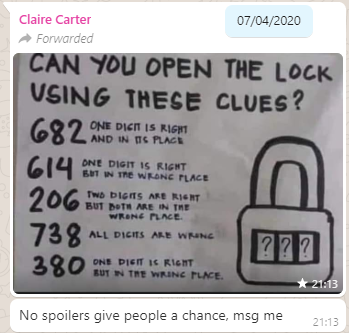
The puzzle was to be interpreted as follows: you have a three-digit combination lock with numbers 0-9; so 1,000 possible combinations in total. Bulls and Cows-style, a series of clues indicate how “close” each of several pre-established “guesses” are. In “bulls and cows” nomenclature, a “bull” is a correctly-guessed digit in the correct location and a “cow” is a correctly-guessed digit in the wrong location, so the puzzle’s clues are:

By the time I’d solved her puzzle the conventional way I was already interested in the possibility of implementing a general-case computerised solver for this kind of puzzle, so I did. My solver uses a simple “brute force” technique, as follows:
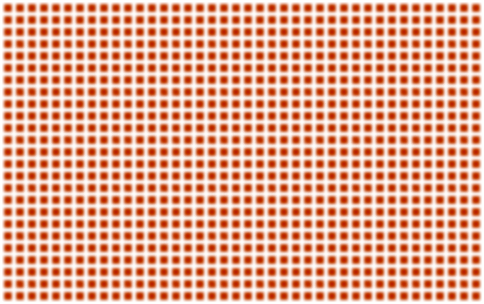
Visualising the solver as a series of bisections of a search space got me thinking about something else: wouldn’t this be a perfectly reasonable way to programatically generate puzzles of this type, too? Something like this:
Interestingly, this approach is almost the opposite of what a human would probably do. A human, tasked with creating a puzzle of this sort, would probably choose the answer first and then come up with clues that describe it. Instead, though, my solution would come up with clues, apply them, and then see what’s left-over at the end.

I expanded my generator to go beyond simple bulls-or-cows clues: it’s also capable of generating clues that make reference to the balance of odd and even digits (in a numeric lock), the number of different digits used in the combination, the sum of the digits of the combination, and whether or not the correct combination “ascends” or “descends”. I’ve ideas for other possible clue types too, which could be valuable to make even tougher combination locks: e.g. specifying how many numbers in the combination are adjacent to a consecutive number, specifying the types of number that the sum of the digits adds to (e.g. “the sum of the digits is a prime number”) and so on.
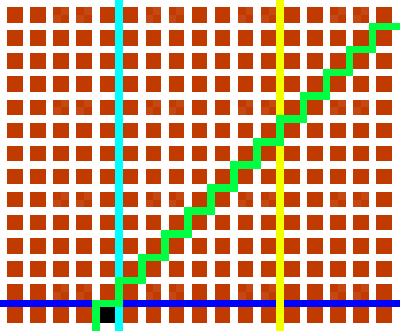
Next up, I wanted to make a based interface so that people could have a go at the puzzles in their web browser, track their progress through the levels, get a “score” based on the number and difficulty of the locks that they’d cracked (so they can compare it to their friends), and save their progress to carry on next time.
I implemented in pure vanilla HTML, CSS, SVG and JS, with no dependencies. Compressed, it delivers to your browser and is ready-to-play in a little under 10kB, most of which is the puzzles themselves (which are pregenerated and stored in a JSON file). Naturally, it lends itself well to running offline, so it’s PWA-enhanced with a service worker so it can be “installed” onto your device, too, and it’ll check for bonus puzzles and other updates periodically.
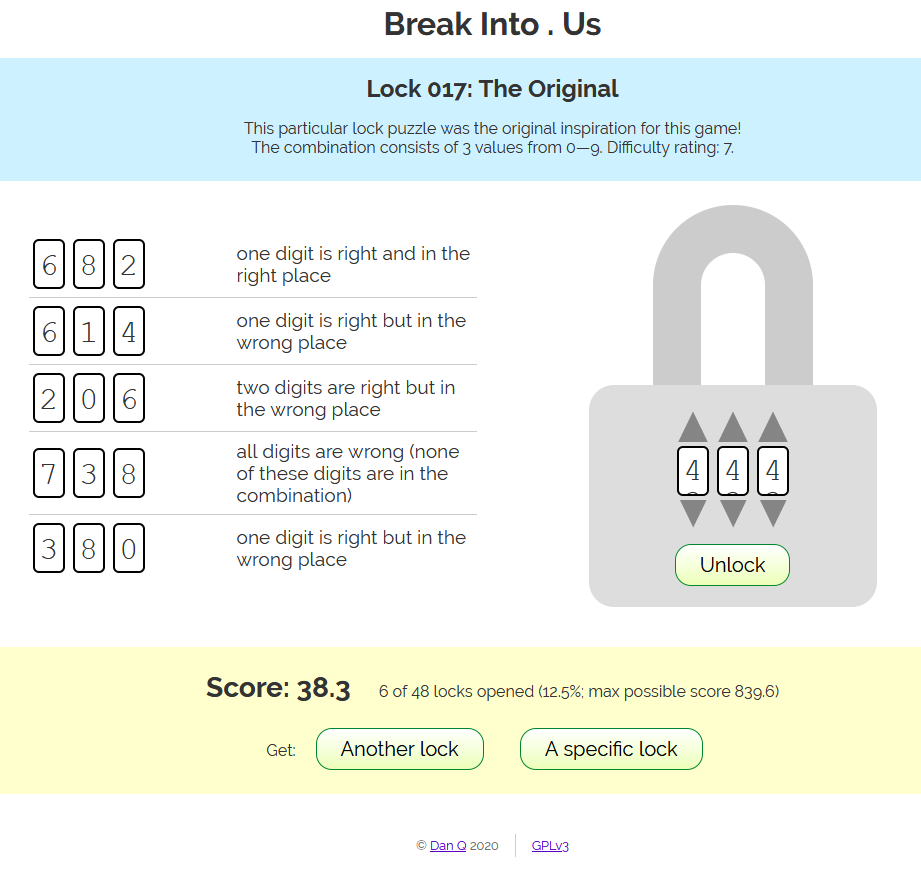
Honestly, the hardest bit of implementing the frontend was the “spinnable” digits: depending on your browser, these are an endless-scrolling <ul> implemented mostly in CSS and with snap points set, and then some JS to work out “what you meant” based on where you span to. Which feels like the right way to implement such a thing, but was a lot more work than putting together my own control, not least because of browser inconsistencies in the implementation of snap points.
Anyway: you should go and play the game, now, and let me know what you think. Is it worth expanding and improving? Should I leave it as it is? I’m open to ideas (and if you don’t like that I’m not implementing your suggestions, you can always fork a copy of the code and change it yourself)!
Or if you’d like to see some of the other JavaScript experiments I’ve done, you might enjoy my “cheating” hangman game, my recreation of the lunar lander game I wrote in college, or rediscover that time I was ill and came up the worst conceivable tool to calculate Pi.
This is a repost promoting content originally published elsewhere. See more things Dan's reposted.
I managed to crack this on my second attempt, but then: I did play an ungodly amount of Kerbal Space Program a few years back. I guess this means I’m now qualified to be an astronaut, right? I’d better update my CV…
Normally this kind of thing would go into the ballooning dump of “things I’ve enjoyed on the Internet” that is my reposts archive. But sometimes something is so perfect that you have to try to help it see the widest audience it can, right? And today, that thing is: Mackerelmedia Fish.

What is Mackerelmedia Fish? I’ve had a thorough and pretty complete experience of it, now, and I’m still not sure. It’s one or more (or none) of these, for sure, maybe:
Rock Paper Shotgun’s article about it opens with “I don’t know where to begin with this—literally, figuratively, existentially?” That sounds about right.
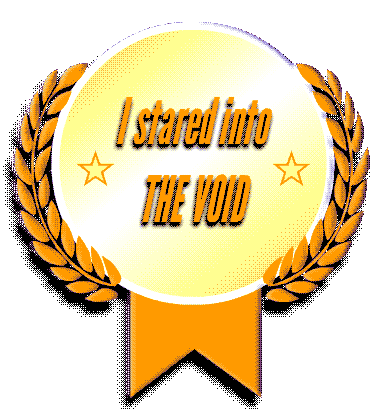
What I can tell you with confident is what playing feels like. And what it feels like is the moment when you’ve gotten bored waiting for page 20 of Argon Zark to finish appear so you decide to reread your already-downloaded copy of the 1997 a.r.k bestof book, and for a moment you think to yourself: “Whoah; this must be what living in the future feels like!”
Because back then you didn’t yet have any concept that “living in the future” will involve scavenging for toilet paper while complaining that you can’t stream your favourite shows in 4K on your pocket-sized supercomputer until the weekend.

Mackerelmedia Fish is a mess of half-baked puns, retro graphics, outdated browsing paradigms and broken links. And that’s just part of what makes it great.
It’s also “a short story that’s about the loss of digital history”, its creator Nathalie Lawhead says. If that was her goal, I think she managed it admirably.
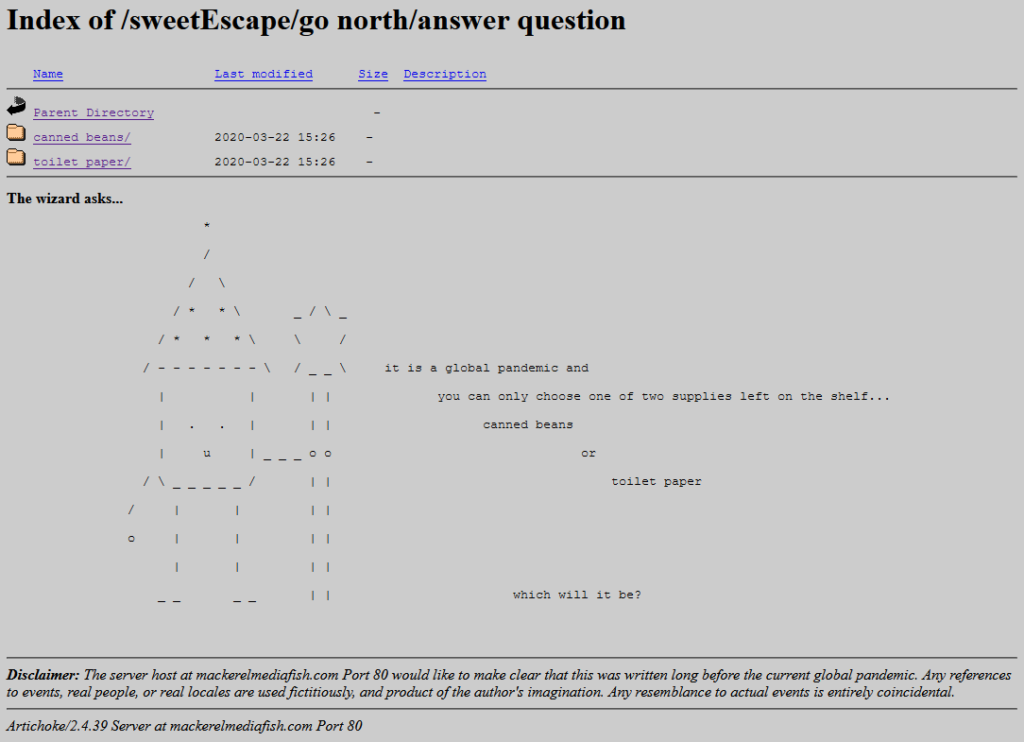
If I wasn’t already in love with the game already I would have been when I got to the bit where you navigate through the directory indexes of a series of deepening folders, choose-your-own-adventure style. Nathalie writes, of it:
One thing that I think is also unique about it is using an open directory as a choose your own adventure. The directories are branching. You explore them, and there’s text at the bottom (an htaccess header) that describes the folder you’re in, treating each directory as a landscape. You interact with the files that are in each of these folders, and uncover the story that way.
Back in the naughties I experimented with making choose-your-own-adventure games in exactly this way. I was experimenting with different media by which this kind of branching-choice game could be presented. I envisaged a project in which I’d showcase the same (or a set of related) stories through different approaches. One was “print” (or at least “printable”): came up with a Twee1-to-PDF converter to make “printable” gamebooks. A second was Web hypertext. A third – and this is the one which was most-similar to what Nathalie has now so expertly made real – was FTP! My thinking was that this would be an adventure game that could be played in a browser or even from the command line on any (then-contemporary: FTP clients aren’t so commonplace nowadays) computer. And then, like so many of my projects, the half-made version got put aside “for later” and forgotten about. My solution involved abusing the FTP protocol terribly, but it worked.
(I also looked into ways to make Gopher-powered hypertext fiction and toyed with the idea of using YouTube annotations to make an interactive story web [subsequently done amazingly by Wheezy Waiter, though the death of YouTube annotations in 2017 killed it]. And I’ve still got a prototype I’d like to get back to, someday, of a text-based adventure played entirely through your web browser’s debug console…! But time is not my friend… Maybe I ought to collaborate with somebody else to keep me on-course.)
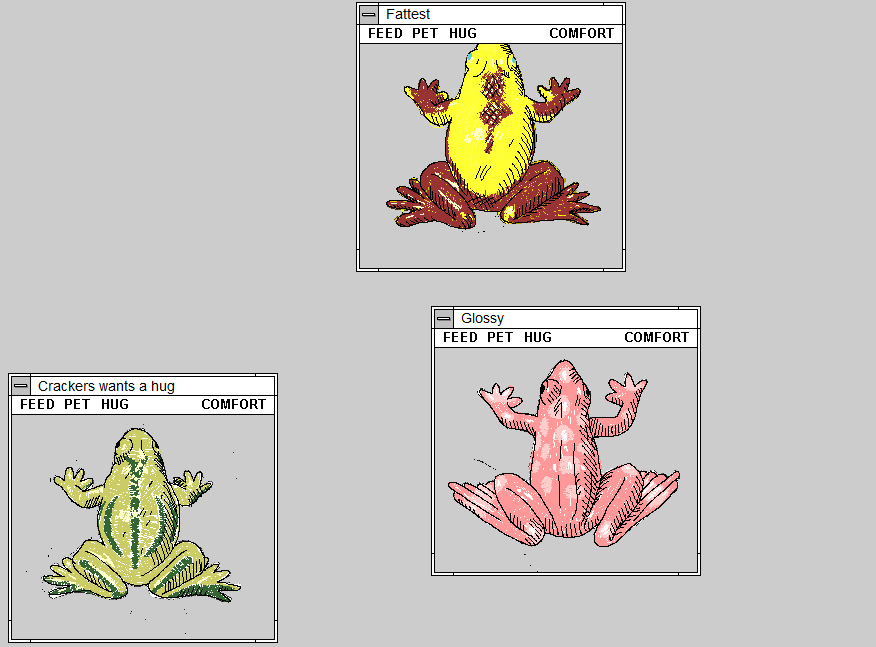
In any case: Mackerelmedia Fish is fun, weird, nostalgic, inspiring, and surreal, and you should give it a go. You’ll need to be on a Windows or OS X computer to get everything you can out of it, but there’s nothing to stop you starting out on your mobile, I imagine.
Sso long as you’re capable of at least 800 × 600 at 256 colours and have 4MB of RAM, if you know what I mean.
This is a repost promoting content originally published elsewhere. See more things Dan's reposted.
Back in 2011, some folks cross-compiled Doom (the original, not the reboot, obviously) to JavaScript, leveraging the capabilities of the then-relatively-young
<canvas> element and APIs. I was really impressed to see that JavaScript had come so far and that
performance on desktop devices was so slick. Sure, this was an 18-year-old video game, but it was playable in a browser, which was a long way from the environment for which it
was originally developed.
Now Doom 3‘s playable in a browser, and my mind’s blown all over again. This follows almost the same curve – Doom 3’s 16 years old – but it still goes to show that there’s little limit to the power of client-side browser programming. They’ve done this magic with WebAssembly; while WebAssembly goes slightly against my ideas about the open-source nature of the Web, I still respect the power it commands to do heavyweight crunching tasks like this one.
How long until AAA developers start developing with the Web as an additional platform?